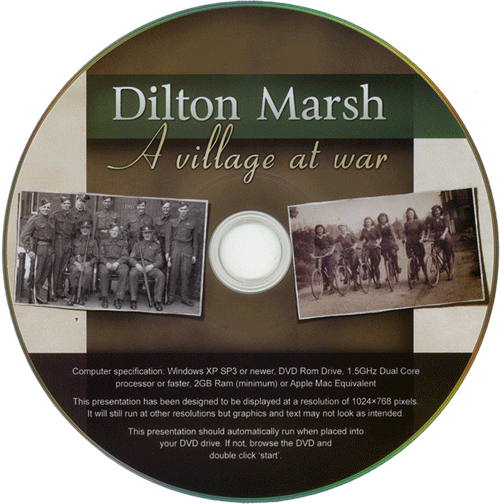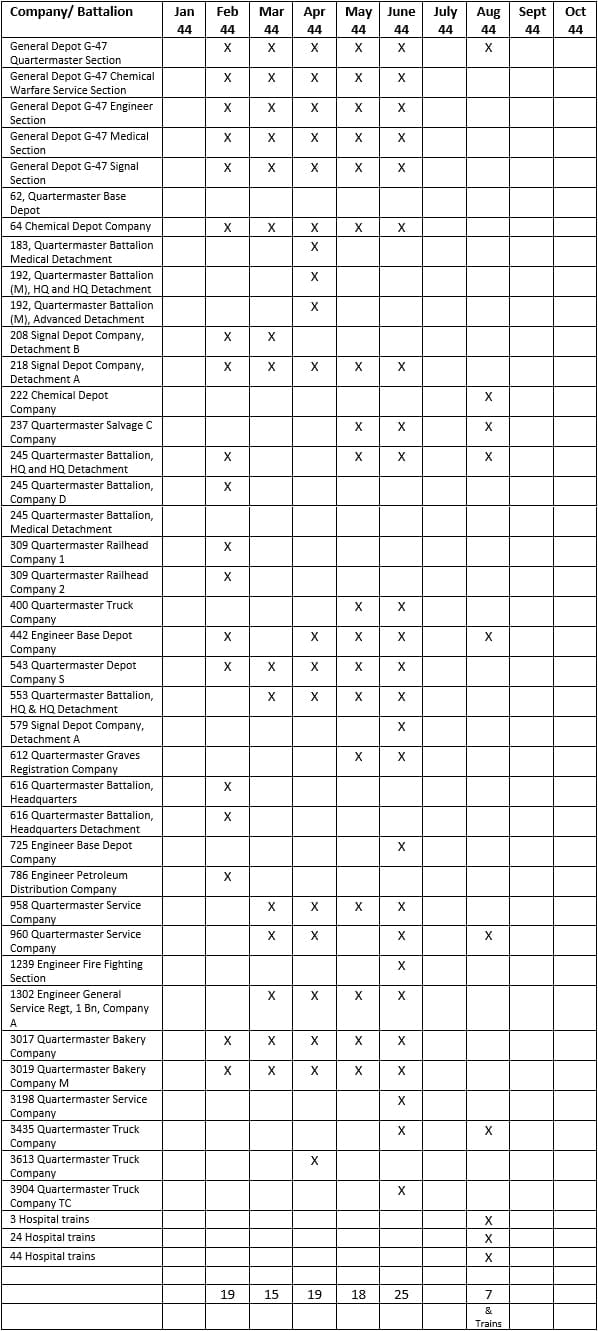

The “A Village at War “ CDs
The “A Village at War “ CDs are now available from Graham Noble and are free of charge. This of course will be on a first come first served basis.
I am available on g.rc.noble at btintetrnet.com and phone contact is 01373 858561.
CDs will also be available at our next talk.
Troops and their Roles in the War
The general explanation of who was here and why they had arrived on our doorstep so to speak. Mainly to do with D Day build up.
Troops in the area, including the 960th Quartermaster Service Company (the original point of the start of the research) have been identified from the records held by the D Day Museum. (generally
Compiled by Philip Grinton, 828 Beaver St, Santa Rosa, California).
It may be that there were troops based around the area prior to this but at present we have no way of tracking that possibility.
We have therefore tracked them from February 1944 – August 1944, in the local area.
We are attempting to get further information on each of the units and to extend the timeline from November 43 to Dec 44. This will give a comprehensive schedule of the likely troop number in and around Dilton during this period.
We do have more information on the 960th as they went into Europe. See later section.
On the basis that a Company was about 200 soldiers, the number in and around the area will have varied between 3000 and 5000. This would have had a great impact on the local area which, until that time, had been a quiet rural area, everyone knowing everyone else and families living in the same area for generations.
This chart highlights some interesting aspects to the time the troops were here:
1. They are, in the main, Logistics troops; Quartermasters, fuel, Engineers, vehicles, cooks. The likelihood of them having provisions to share with locals is very high as they were managing the army’s food and supplies!
2. The time they were here was very short, 5-6 months in numbers; presumably there was some build up prior to the main number of units arriving.
3. They were not a constant body of units, they came and went, presumably as the demands of war and preparation for D Day changed needs.
4. The numbers were actually fairly static, although clearly the individuals changed as the units moved around.
5. Once D Day had passed, the role of the area changed to one of support for troops injured. There was also a small need for storage and replenish. The Quartermaster Base Depot seems to have taken over co-ordination from the Quartermaster Battalion who presumably had moved into mainland Europe.
6. The 960th were still based in the area in August 44, although they were moved out shortly after to continue their work supporting front line troops in mainland Europe.

